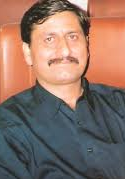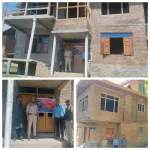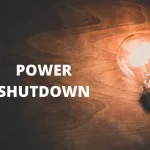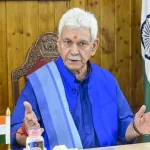FRAGRANCE OF IDEAS
There was a time when the whispering campaigns were recognized as the most powerful weapon of the process of narrative building. The whispering campaign had a deep and widespread impact on the minds of the people and sometimes it would sweep away large volumes of masses in a very dramatic fashion.
However, it was, with the passage of time, replaced or joined by the printed word with the advent of the printing press. Newspapers, posters and pamphlets would create a huge impression on the ground and would build a strong opinion about people, situation and circumstances.
The 20th century was by and large the century of the printing press, printed word and the published opinions creating solid perception about the available scenario of various hues. Newspapers were always sought after for building specific narratives or bulldozing the existing narratives.
During the First World War as well as the Second World War, newspapers contributed to the situations of narrative building in a great way. Radio and Television broadcasts also played their sweeping roles during the 20th century. Whether in times of war or peace, these modes of information and broadcasting played a key role in shaping the fate and future of a number of generations consequent upon creation of the desired narratives.
The impact of the print and electronic media during the later half of the 20th century was surely overwhelming. The reverberations of these recognized tools helped narrative-building in an unprecedented and unchallenged manner for a long time.
With the advent of digital and commercial media, narrative building crossed its conventional boundaries with the passage of time. Across nations and societies in the world, the digital and commercial electronic media changed the whole scenario in relation to effective narrative building.
By the end of the 20th century and the beginning of the 21st century, the seeds of social media were sown in an unprecedented manner throughout the world. Between 2001 and 2010, a plethora of changes in the world of information, broadcasting and narrative building took shape and built a strong format for the emerging social media at the international level.
The new format of communication in the shape of social media assumed its role in a big and strong way and compelled all other modes of broadcasting, information and transmission to toe its line and dictat.
Fast changes in the field of information technology and the real time hardware and software technology helped social media to gather mass. The internet brought a revolution throughout without providing any chance to the other established formats to stop the speedy overtake by social media.
Within no time, in a space of ten years, the social media eclipsed everything and thus all other formats adopted the new communication pathway as its new ‘national highway’ in the changed circumstances. For the last two decades, our life has been under a heavy influence of the newly recognised way of life, the social media, along with the other traditional and conventional formats of communication.
With these fast emerging changes, the narrative building also went into the required and desirable changes. In India in particular, in the period from 1947 to 1999, there was a particular line of thinking that would formulate the basic contours of narrative building in public life. It was under heavy influence of the Gandhi-Nehru mindset initially and the Nehruvian school of thought in most of the later part of this period.
We saw a formidable change in the narrative formation during the period after 1999 when we were fighting the Kargil war. The Vajpayee government took lead in this direction and made it known to the world that India had decided to change itself and its earlier views in relation to geopolitics also needed to take a rest now.
Ever since Pakistan came into existence, it built a very strong and rabid narrative against India and spread it to the main international powers both overtly and covertly. It also challenged the Indian narrative at regional and global level with vehemence, particularly in relation to Jammu and Kashmir and terrorism, at the detriment of the Indian interests.
However, India changed the gear again post 26/11 terror attack in Mumbai and started posting its improved narrative through various channels swiftly making a deeper impact on the global position of India. It challenged the narrative of Pakistan and its international key partners in a very concerted manner. The government of India (led by Congress) and the main opposition in the parliament (led by BJP) contributed to this narrative building and its spread though in a moderate fashion yet causing an overwhelming impact.
The change of the government at the Centre in 2014 brought further improvement and a complete shift in the national and international narrative of India. It didn’t only consolidate the earlier position of India in this regard but also made it sure that Pakistan and its key partners and supporters globally are dispersed politically on the front of geo-politics.
The narratives like “Terror and talks won’t go together” brought a sea-change in favour of India and in the dis-favour of Pakistan and its cohorts. India weaned away close friends and allies of Pakistan on the basis of a strong, trustful and honest narrative during the last eleven years of BJP-NDA rule. India’s global narrative building after the Pahalgam terror carnage and Operation-Sindoor further took the Indian cause miles ahead in the arena of geopolitics.
Some more strong narratives like “water and blood don’t flow together” in context of the suspension of Indus Water Treaty and “the days of cross-border terrorism are over, all acts of terror would now be treated as acts of war” unleashed by India during and after Operation-Sindoor are historical narratives impacting not only the regional situation but also the international scenario.
India’s declared position on international platforms on various internationally important issues in Asia, Europe and America or global groupings like G7, G20, SCO, QUAD and BRICS and even UN have created a great impact about and in approbation of India.
Narrative building and their campaigns & wars are widespread and aren’t limited to a particular country, region, ideology, government or society. They have become an essential part of our life. On a daily basis, we observe every nation, political party, social grouping and important foras and platforms engaged in this exercise very intimately and effectively.
US President, UN General Secretary, Russian President or the Chinese and French President or the Israel Prime Minister and the Chairman, European Union, all add up to the global discussions on national and international issues on the basis of their narratives inspired by their national or forum policies.
India as the South Asian leader and also as the prominent leader of the Global South has created its own niche in the international scenario on the basis of its strong and effective narrative over the last a decade or so. The Prime Minister, Narendra Modi has been seen overwhelmingly engaged in this exercise with commitment and dedication. The EAM, S. Jaishankar and the parliamentary delegations sent by India to almost three dozen nations after the suspension of Operation-Sindoor have done a marvellous & remarkable job as the representatives of India’s narrative and world-view.
A large number of state and non-state actors have largely contributed to the success of this narrative building campaign over the last a number of years. Though there are a number of quarters both within and outside India who have been contesting the recognised narrative of India nationally and internationally but they have been doing so without any success.
Russia-Ukraine war, Israel-Hamas conflict, recent India-Pakistan limited war and Israel-Iran battle or the intervention of US in these war or war-like situations have been inspired, governed and guided by some serious and strategic narratives. These have been manufactured and inspired by both short-term as well as the long-term goals.
However, every narrative was/is hugely motivated and stimulated by core national interests of various nations or groupings of nations. India’s narrative building exercise and campaign have different challenges and provocations. However, despite those hiccups, the overall impact of the campaign has been overwhelmingly positive even at the domestic level. The negative forces have been unsuccessful in their attempts to discredit the national narrative persistently.
We have observed the internal strength and the strategic value of our national narrative during the post-Article 370 abrogation scenario and also during the G20 year-long series of programmes in various parts of India and abroad.
This author was also deeply involved in those specific exercises and our deep commitment, dedication and honesty in our approach to create and present our national narrative in the most convincing manner created the desired results in favour of India. The potential of an honest and truthful narrative is enormous and massive. The negative, untruthful and dishonest narrative has a limited age and Pakistan in this context is an appropriate example.
When the narrative wars are ruling the roost, anywhere and everywhere, care & caution need to be taken about the authenticity, integrity and on-the-ground support of the narratives. These narrative wars will continue unabatedly, however, their formats may change.
In order to win an argument or even the battle of wits or the war of narratives as a whole, truth and honesty of purpose can’t be sacrificed and should never be. That is the lesson of history, which Napoleon said to his son, is the only philosophy..!
(The author is a senior BJP & KP leader, Human Rights Defender, author & columnist and can be reached at: [email protected])








